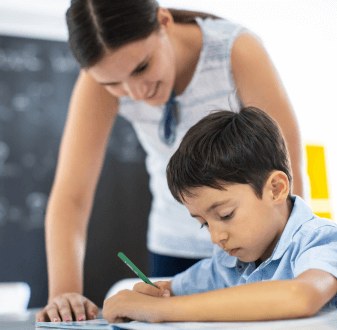Approximately one in ten students is estimated to have a learning disability. However, this statistic is not complete, as it does not account for students with undiagnosed learning difficulties or those facing other barriers to learning. Educators are not equipped to effectively support these students. Research indicates that less than half of Australian teachers feel adequately prepared to teach students with disabilities.
Despite calls for increased government support and training from educational bodies such as the New South Wales Teachers Federation, actionable steps to address these challenges have been limited. Consequently, it is imperative for educators to proactively seek strategies to enhance their confidence and competence in supporting students with diverse learning needs.
What are learning differences?
According to the National Consistent Collection of Data on School Students with a Disability, learning difficulties comprise aspects that may hinder a student's ability to accomplish at the same rate as their peers. Within the classroom context, identifying and addressing these needs often requires a multifaceted approach, including observation, collaboration with parents and caregivers, together with insights from healthcare professionals.
Examples of learning differences
Learning differences manifest in various forms, with reading and writing difficulties being among the most prevalent in Australian classrooms. Conditions such as dyslexia, dysgraphia, ADHD, OCD and autism present unique challenges that may require tailored interventions. While teachers are not expected to diagnose students, recognising apparent behaviours and adapting teaching methods accordingly is crucial. Moreover, it is essential to not overlook the potential impact of students’ trauma responses, which could mimic neurodiverse behaviours and further complicate identification.
Strategies to support students with learning differences
Inclusive education punctuates the adoption of evidence-based strategies to accommodate diverse learning needs effectively. Here are ten strategies designed to support students with learning differences:
- Engage interests: Incorporate students' interests into lessons to enhance engagement and motivation.
- Differentiated instruction: Tailor teaching methods and materials to accommodate individual learning styles and preferences.
- Multisensory learning: Provide opportunities for students to engage with material using multiple senses, enhancing comprehension and retention.
- Task breakdown: Break down complex tasks into smaller, manageable steps to reduce overwhelm and facilitate understanding.
- Visual tools: Utilise graphics and visual aids to help students organise information and clarify concepts.
- Assistive technology: Integrate technology tools such as text-to-speech software and specialised apps to support learning and accessibility.
- Promote self-advocacy: Empower students to communicate their needs and seek assistance when necessary.
- Extra time and practice: Provide additional time and opportunities for practice to accommodate diverse learning paces and needs.
- Clear instructions: Deliver instructions in a clear, concise manner, supplemented with visuals as needed to support comprehension.
- Positive learning environment: Foster a supportive classroom culture where all students feel valued, respected and encouraged to succeed.
Supporting students with learning differences is a multifaceted endeavour that requires ongoing dedication and a commitment to inclusive practices. By implementing evidence-based strategies tailored to individual student’s needs, educators can create a learning environment where all students feel supported and empowered to thrive. Continued reflection, collaboration and professional development are essential for ensuring the success and well-being of every learner. Through these efforts, educators can truly make a difference in the lives of students with diverse learning needs.




